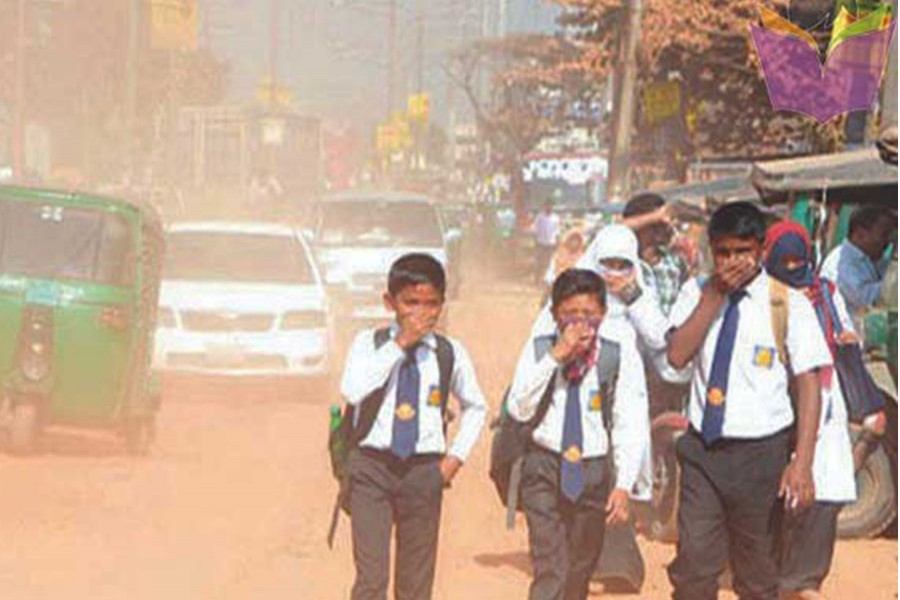Dhaka City has the dubious distinction of topping the list of the worst polluted cities in the world perhaps for longer than any other city in the world of late. This is despite the fact that ground work of the metro rail has more or less been completed. The elevated expressway still has extensive digging and other works to be done. But the expressway does not cover the entire city space and should not have earned for the city the notoriety of defeating the world's metropolises or megalopolises in fouling air people inhale for survival.
If the city's ranking in the overall Air Quality Index (AQI) is worst among its counterparts, there is another shocking revelation a collaborative study has made lately. This concerns the indoor air quality of high schools in this capital city. A study by the Bangladesh University of Engineering and Technology (BUET), the UK-based Global Centre for Clean Air Research, the Philadelphia University and the Houston University of America published as a research paper in the current month's prestigious international science journal the Environmental Research Communication concerns the classroom pollution.
The study found the air quality in classes deplorably poor so much so that it was almost three times higher (2.9 times) than the WHO-recommended level in terms of different types of particulate matter (PM) ---measure of harmful air particles. Obnoxious gases found there are another hazard. The presence of PM 1, PM 2.5 and PM 10 and nitrogen dioxide, volatile organic and carbon dioxide in classrooms were reportedly tested. If the WHO standards of 45 micrograms of PM 10 and 15 micrograms of PM 2.5 in a cubic metre of air are taken into consideration, the levels in Dhaka's educational institutions are really frightening. Although, the level of hazardous gases has not been determined, their presence makes the situation worse for students and teachers too.
It is only natural that such levels of air pollution inside classrooms have their calamitous consequences ---40 per cent learners cannot breathe normally. They spend 17 per cent of their day in schools and therefore catch a cold and a cough often enough. Their immunity is thus compromised at school. Scholars working with dust pollution have rightly pointed accusing fingers at the schools' locations either in congested surroundings or right on the street. Polluted air cannot pass through the classrooms because their locations or a lack of well ventilated design.
This is undesirable. If students' health and hygiene are compromised at school and they suffer from cold, cough and fever and other respiratory problems, those have negative impacts on their study as well. If someone develops such chronic problems, it surely has its adverse economic implications as well. If 40 per cent learners have to pay for this, the overall health, social and economic costs are sure to be heavy.
In this connection, it is worth mentioning that the indoor pollution of Dhaka residences is not likely to be negligible too. Many of the students exposed to the polluted air in classrooms may have to face the same problem at home depending on the locations of their residences. If air flow cannot pass out of a room ---no matter in schools or homes, the harmful air particles and with those the droplets sneezed by a patient suffering from cold, cough and even tuberculosis get arrested. Inhaling those, any healthy person can fall victim to such diseases.
Also negotiating the dusty and polluted Dhaka roads is a continuous nightmare for children, adults and elderly people with the former and the latter running the greater risk. The issue here is management of development work in a smart way. There are several advanced systems of management of the dust produced during development works. Then the traditional method of sprinkling water in certain areas can be of help. If there is a will, there is a way. Unfortunately, the problem is with the mindset. Apart from the day-to-day management, there are long-term measures like bringing more and more areas of the city under green cover to improve the air quality in this city.


